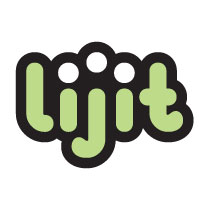 Lijit announced that it has raised $6 million in Series D financing from existing investors Foundry Group, Boulder Ventures and High Country Venture. This put their total to-date for funds raised at $18.3 million. Read the release.
Lijit announced that it has raised $6 million in Series D financing from existing investors Foundry Group, Boulder Ventures and High Country Venture. This put their total to-date for funds raised at $18.3 million. Read the release.
Lijit CEO Todd Vernon discussed the new funds and the product road map as it relates to data.
AdExchanger.com: For what do you anticipate the $6 million of new funding for Lijit will be used?
TV: The use of proceeds is to fund operations of the company, specifically our direct sales effort.
Please share trends you’re seeing with buyers of Lijit ad network placements recently. Any vertical strengths, brand, DR, etc.?
Lijit’s sales efforts are focused on brand sales. The great thing about the lijit publisher base is the engagement of the audience. Our sites tend to be in the mid and long tail with very loyal readers. This translates to greater reader affinity with content and ads that appear on these sites. One of my favorite content verticals is the lifestyle segment with Mommy publications. CPG really performs well in this segment and all you have to do is read some of the sites to know why. These publishers have opinions and that really propels the performance in this segment.
Overall, the great thing about the Lijit Network is we have a relationship with every publisher not requiring us to buy media on exchanges. Because of this relationship we give advertising clients complete transparency where their campaigns and running and complete control over optimizing those campaigns. Having a relationship with the publisher is a key differentiator that allows us to do more creative things for Agency’s that would not be possible if simply bought inventory on an ad exchange.
TechCrunch’s Mike Arrington reported that you anticipate $4-$5 million in revenues this year. Of the $4-5 million, how much is selling display ad placements and how much is selling cookies-alone for targeting purposes?
The data we capture in the network is currently used for two things. First and foremost to help our publishers create better content. This is what much of publisher base has known us for over the last 3 years. Second, we use that data in aggregate to find key audiences that our direct and channel ad partners need to reach. When we find those audiences we align those opportunities with our publishers who wish to take advantage of that revenue stream.
Currently Lijit does not sell data to third parties. We are exploring those kinds of relationships today, however one of the hurdles for us is identifying how to correctly attribute revenue for this back to our publisher partners. To maintain the proper transparency back to our publisher partners we have to be able to compensate them for the use of that data. We don’t have a complete offering yet in this area that works for all parties but continue to explore.
How do you anticipate Lijit’s data business scaling in the future? Do you plan on selling through data exchanges like BlueKai or Magnetic, or will ad networks and demand-side platforms buy directly?
We have been approached by nearly every DSP to form direct relationships in this area. We have also talked with nearly every data exchange. Due to the complexities of attribution it’s unclear which (if either) is a better (or viable) opportunity for us, our publisher partners and the agency’s we sell to. The problem of disintermediation of the publisher has to be solved before we can do anything meaningful in this space.
Does Lijit offer retargeting of Lijit search audience segments through exchanges and other non-Lijit inventory sources to marketers today? Or will it soon?
Lijit currently only uses data and media from within our own network. The real value we have built since 2006 is building a very large network based not on money but on value. We don’t need to buy media on exchanges and doing so breaks our promise to our ad partners. A major differentiating for us now is we know exactly where the data came from, us. We also know exactly where the media came from, us via our installed publisher partners.
Lijit is always open to new revenue streams but it has to be consistent with our brand promise to our publisher partners. By definition class ad networks have an adversarial relationship with their publisher base. This is where Lijit diverges with Ad Networks. We view ourselves as partners to the publisher and that means a healthy ecosystem involving transparency and attribution.
By John Ebbert











